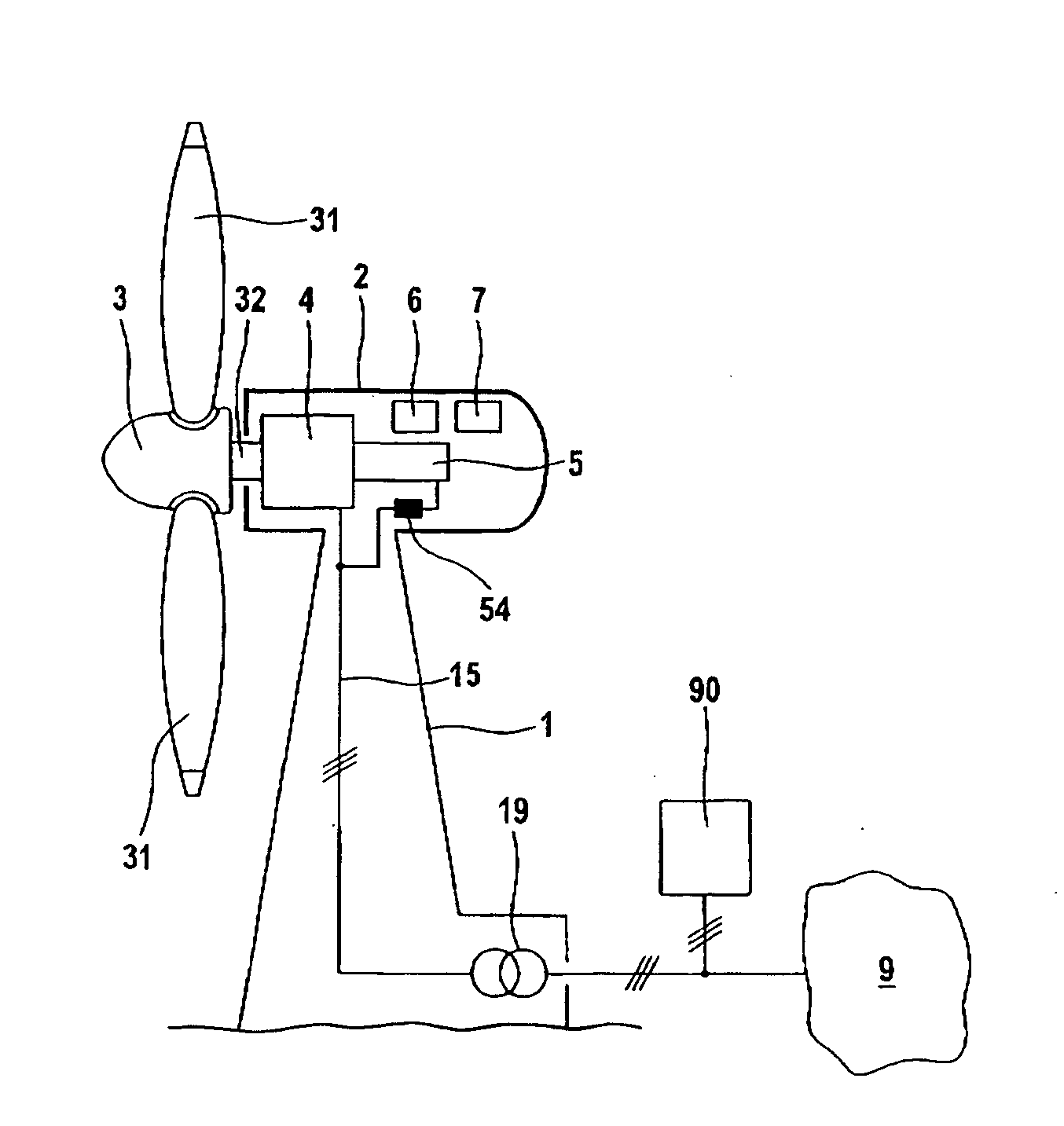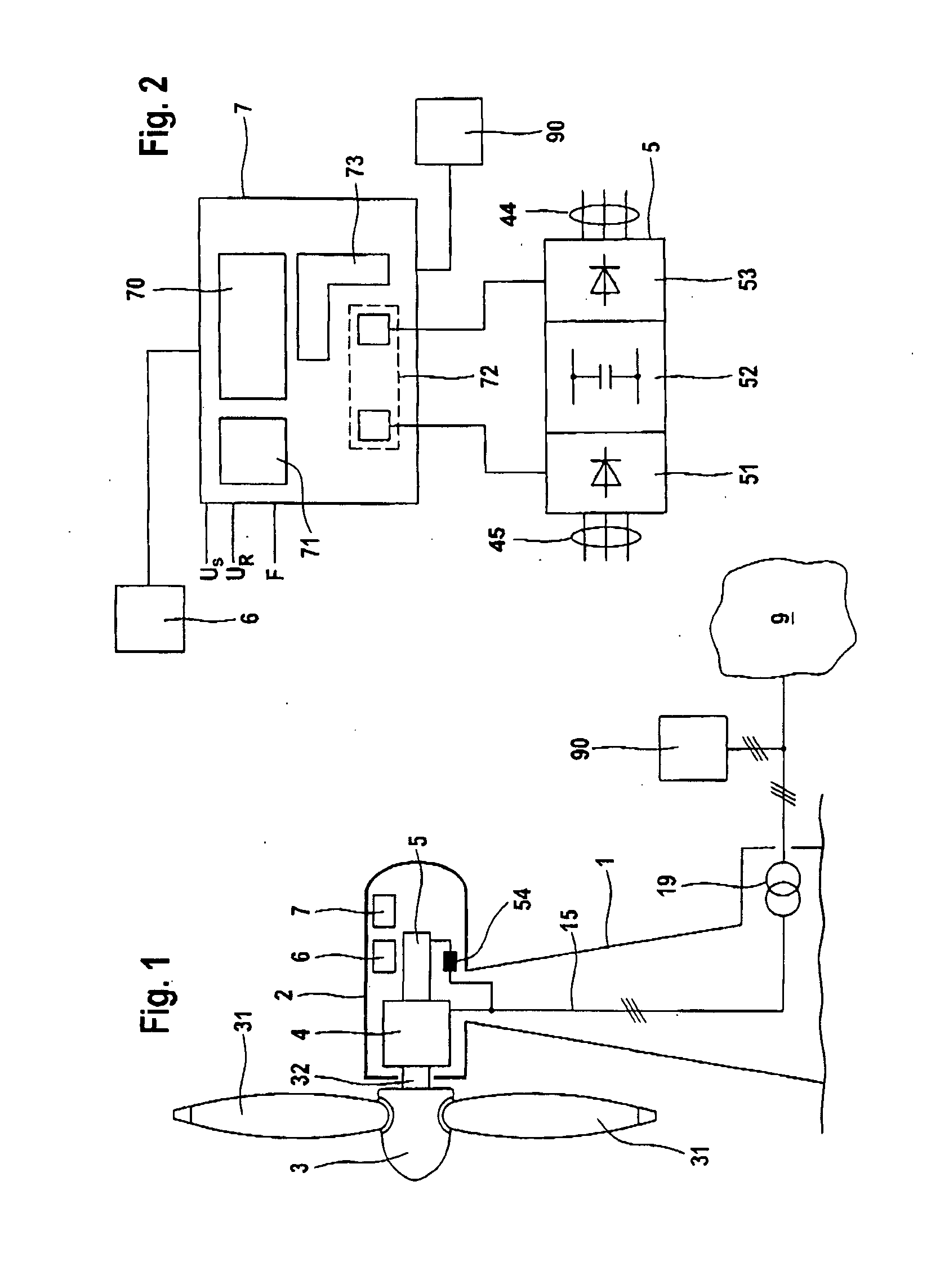Wind energy installation with an extended rotation speed range
a technology of wind energy installation and rotation speed range, which is applied in the direction of electric generator control, machine/engine, dynamo-electric converter control, etc., can solve the problem that the step-up ratio required per se is no longer feasible for very high-power generators, and narrows the usefulness and therefore the yield of wind energy installation
- Summary
- Abstract
- Description
- Claims
- Application Information
AI Technical Summary
Benefits of technology
Problems solved by technology
Method used
Image
Examples
Embodiment Construction
[0025]A wind energy installation designed according to one exemplary embodiment of the invention comprises a tower 1 at whose upper end a machine housing 2 is arranged such that it can rotate in the azimuth direction. A wind rotor 3 having a plurality (3 in the illustrated example) of variable pitch-angle rotor blades 31 is arranged on one end face of the machine housing 2. The wind rotor 3 drives a generator 4, which is arranged in the machine housing 2, via a shaft 32. The generator is a double-fed asynchronous generator with a stator and a rotor. A converter 5 and an operation controller 6 for the wind energy installation are also arranged in the machine housing, and the operation controller 6 is connected to converter regulation 7. The latter controls the converters and their inverters and directly selects the electrical parameters for the converter 5. The electrical power produced by the generator 4 in conjunction with the converter 5 is emitted to a network 9 via a line 15 and...
PUM
 Login to View More
Login to View More Abstract
Description
Claims
Application Information
 Login to View More
Login to View More - R&D
- Intellectual Property
- Life Sciences
- Materials
- Tech Scout
- Unparalleled Data Quality
- Higher Quality Content
- 60% Fewer Hallucinations
Browse by: Latest US Patents, China's latest patents, Technical Efficacy Thesaurus, Application Domain, Technology Topic, Popular Technical Reports.
© 2025 PatSnap. All rights reserved.Legal|Privacy policy|Modern Slavery Act Transparency Statement|Sitemap|About US| Contact US: help@patsnap.com



